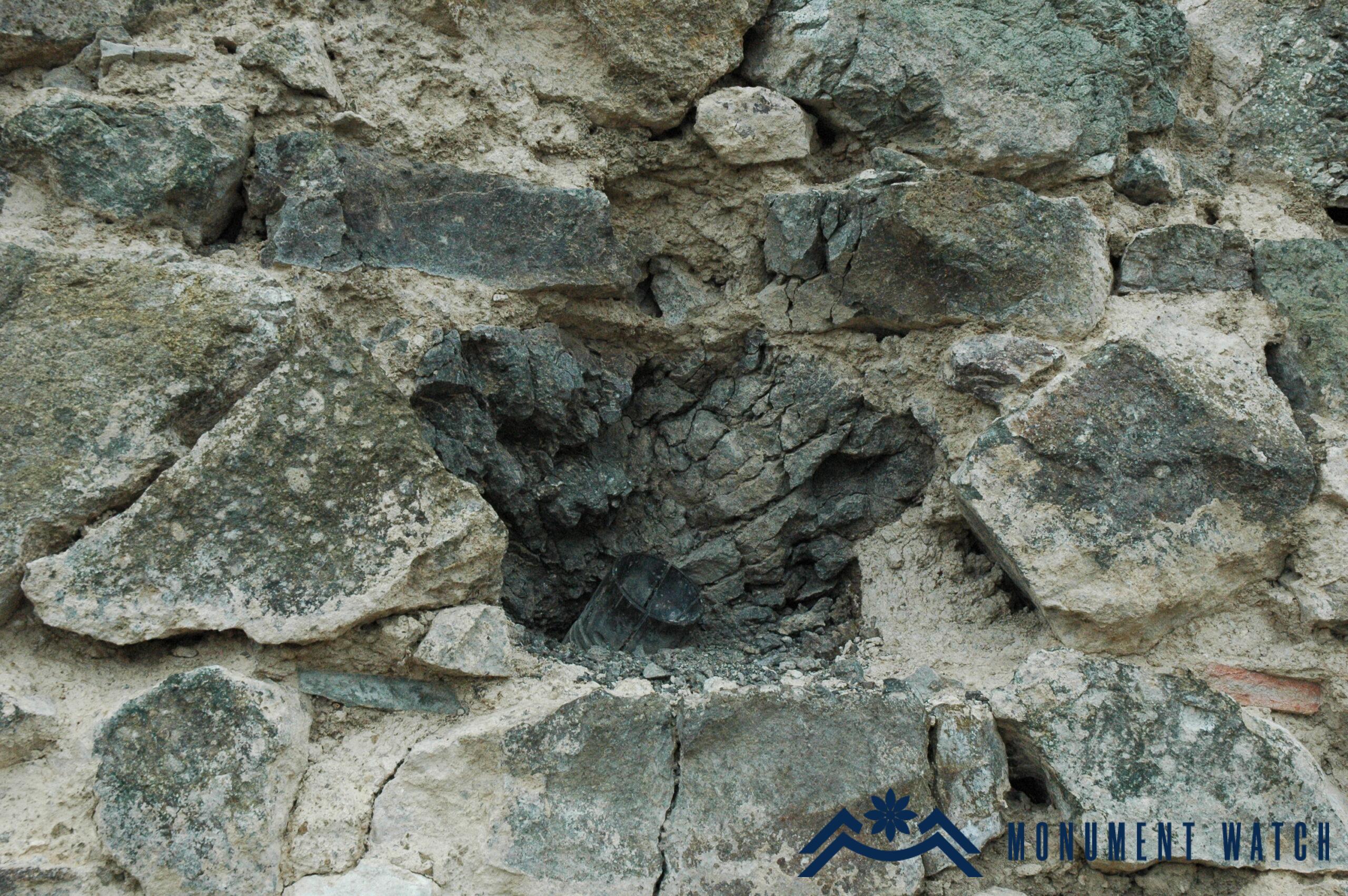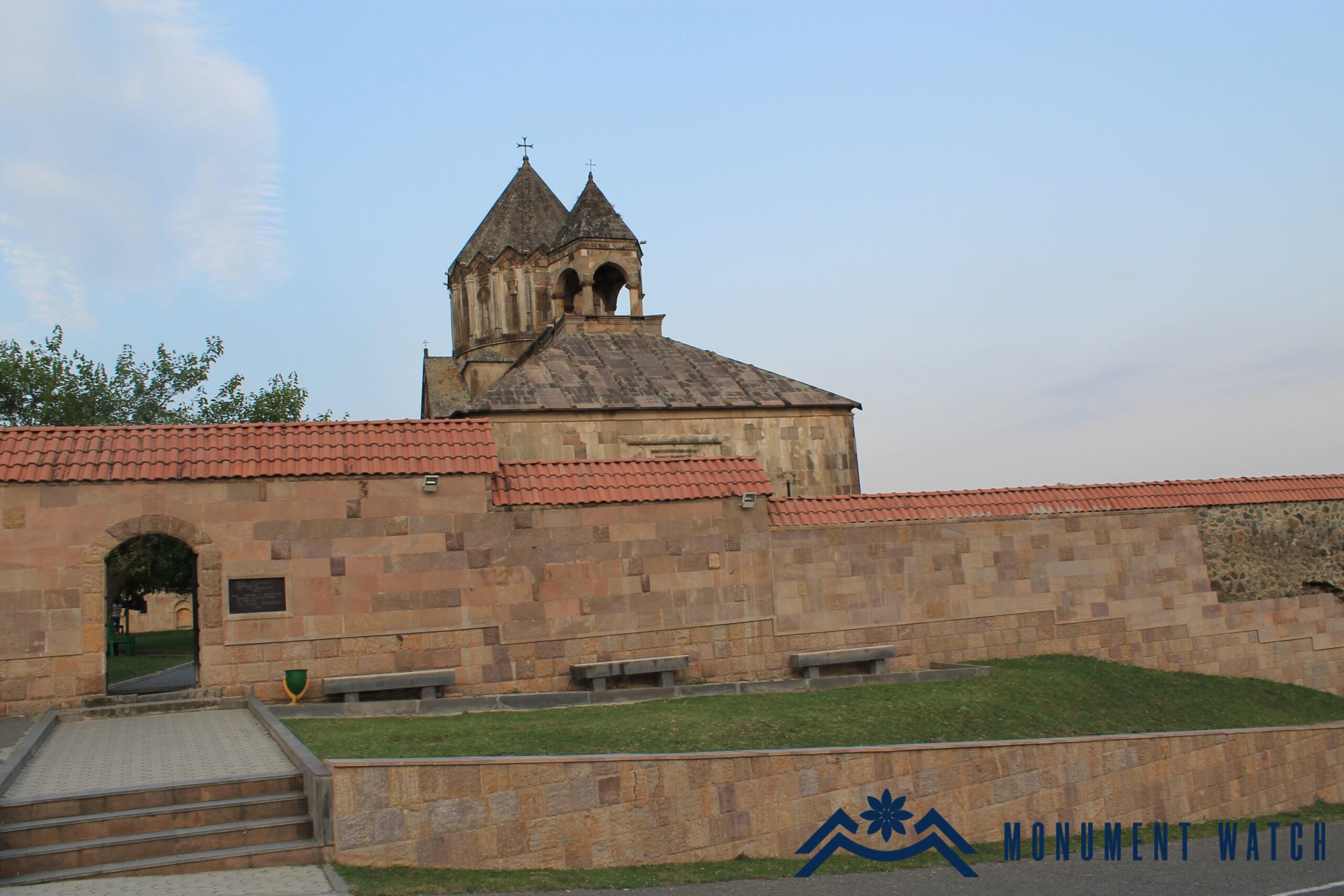Gandzasar monastery during the years of independence
Since 1923, following the annexation of Artsakh to Azerbaijan, Gandzasar Monastery had ceased to function. However, on October 1, 1989, after a prolonged period of silence, a Sunday service was finally held in the Surb Hovhannes Mkrtich church of the monastery. This significant event was led by Bishop Pargev Martirosyan, who was at the helm of the newly established Diocese of Artsakh. During the Artsakh liberation struggle, the Gandzasar Monastery was one of the primary targets of the enemy. Evidence of the intense shelling it endured during the 1990s conflict can still be seen on the monastery's walls and fences. Remarkably, there is an unexploded shell (Fig. 1) that was fired toward the monastery but did not reach its intended target.
In 1992, intense fighting erupted around the Gandzasar monastery when Azerbaijan besieged the area. The church, in particular, became a target for Azerbaijani helicopters, resulting in damage to some of the buildings within the monastery complex.
Repairs to the Gandzasar monastery took place between 1993 and 1997, and additional restoration efforts were carried out in the 2000s with generous donations from the renowned philanthropist Levon Hayrapetyan.
During the years of independence, substantial construction efforts were undertaken in and around the Gandzasar Monastery. In 1991, a 3.1-kilometer mountain road was built, connecting Vank village to the monastery, providing uninterrupted access for traffic. To ensure a reliable drinking water supply to the monastery, a 3.5-kilometer-long aqueduct was constructed. Additionally, a 3-meter-high and 96-meter-long retaining wall was built to fortify the road leading to the monastery from the western side (Fig. 2).
During the restoration process, a total of 286 graves were relocated from the western, northern, and eastern sides of the monastery, ensuring unimpeded access to the site. The monastery's walls underwent a comprehensive reconstruction and were tiled. Additionally, an 88-meter-long retaining wall, standing at a height of 2.5 meters, was built behind the monastery's eastern wall. The gavit's three walls were meticulously aligned, and both the cornices and the entire roof were reconstructed. The damaged stones on the church's exterior and interior walls were diligently repaired, and the temple floor was replaced with precision. Furthermore, the damaged stones and ornaments on the tabernacle bema were restored.
The gavit and temple received new windows and wooden doors (Fig. 3). The monastery's courtyard underwent meticulous landscaping and paving. The 8 congregational cells, Catholicos Yeremia's reception with the monastic library, and the refectory were extensively refurbished and equipped.
A two-story congregational building was built to replace the one that collapsed due to war bombing. The new building is fully furnished and includes a state-of-the-art congregational library. As part of the restoration efforts, the entire monastic complex has been electrified and the two entrances to the monastery have been reinforced with new iron gates. A new two-story seminary building, which measures 52 meters in length and 11 meters in width, was also constructed adjacent to the monastery (Fig. 4).
The Artsakh branch of Matenadaran was inaugurated adjacent to the monastery in November 2015 (Fig. 5). This branch comprises a department dedicated to scholarly research and a museum complex, exhibiting over a hundred manuscripts from Artsakh and Syunik regions, rare historical documents regarding the history of Artsakh, ancient books, and manuscripts that were acquired or retrieved from other regions, monasteries, and churches of Artsakh due to historical circumstances. The facility includes a hall, library, and reading room, providing spaces for hosting various cultural events.
The monastery was not damaged during the 44-day war.
Gandzasar monastery during the years of independence
Artsakh





